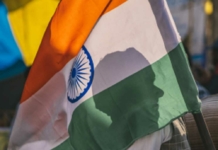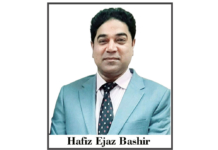The first thing is: this piece’s main source of information is intellectual Mazhar Arif, whom I have never met.
On social media, I discovered his views on the partition of Punjab. Definitely fascinating and captivating.
I’m using a portion of the essay to start a discussion among individuals who are against the division of Punjab. Although I am one among them, Mazhar Fida’s case cannot be disregarded.
A press conference by Punjabi intellectuals, who “vowed to not allow ‘division of Punjab’,” and dubbed the initiative of creation of a separate province comprising the south-western part of Punjab as conspiracy hatched by “corrupt waderas, capitalist, retired bureaucrats, and decadent peers,” is what drove him to write this painful post.
Now, listen to him:
I am empathetic towards my Punjabi friends and understand their feelings of being clueless about how to deal with the historical, cultural and social, and particularly political, realities that they were destined to face one day. I wonder how Mr Fakhar Zaman, chairman World Punjabi Congress, deviated from his earlier stance of years of calling the languages of the people of Pakistan, including Hindko and Seraiki languages, as national languages during the International Progressive Writers’ Conference held in Karachi (1986), Democratic Writers’ Conference held in Lahore by Mr Zaman himself (1987) and during his tenure as chairman Pakistan Academy of Letters. It is unfortunate that a writer of international repute and a committed democrat now says, “We believe in four nationalities and four national languages with Urdu as the link language.”
The irony is that the so-called progressive, secular and democratic Punjabi writers and intellectuals deny the existence of languages other than the ‘four’ and the historical and cultural identities of the people other than the ‘four’ nationalities they believe in. Perhaps, this deviation from an earlier principled position is a result of the pressure the vested interest, by the capitalists, by the rich Punjabi businessmen and civil-military bureaucrats and by their own perks and privileges relished because of being part of the dominant ethnic group in Pakistan; this represents colonial mindset inherited from the British colonial legacy. What I said is a historical fact as Tan Tai Yong in his book “Punjab-The Garrison State” says while focusing his study “on the historical continuities in the processes of state formation by showing how military exigency impinged upon the functioning, and ultimately shaped the character, of the colonial state and society in Punjab, leaving a legacy which has persisted into the post-colonial states…”
Now, coming to the narrative of the ‘Division of Punjab’, it is misleading, tantamount to distortion of history and denying historical, cultural, social and linguistic realities. The demand by the Seraiki people is not to ‘divide’ Punjab but restore the autonomy of the occupied territories of Multan and Bahawalpur. Punjab is already divided twice; first when Ranjeet Singh signed an agreement with the British rulers and River Sutlej was made the border between northern and southern Punjab, and second, at the time of partition of India when Punjab was divided into East (Indian) Punjab and West (Pakistani) Punjab. Interestingly, two more provinces have been carved out from Indian Punjab. Multan was never a part of Punjab in the history until British made it an administrative division and annexed it to Punjab in 1849. Even during Sikhs’ occupation, Multan was a separate province and Dewan Sawan Mal and Dewan Mool Raj served as its governors under the Sikh rule. Bahawalpur state was made part of Punjab when One-Unit was abolished in 1969. In fact, at the time of partition, the major part of Punjab was gone to India, and now the Pakistani Punjab is, more or less, a 200 km wide strip along the Indian border from Kasur to Jhelum. So, the narrative of the ‘Division of Punjab’ is a foul cry just to protect the post-colonial interests of Punjab and the Pakistani state.
More to follow.






